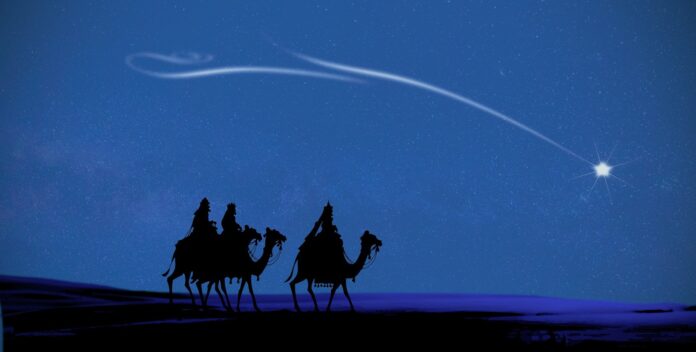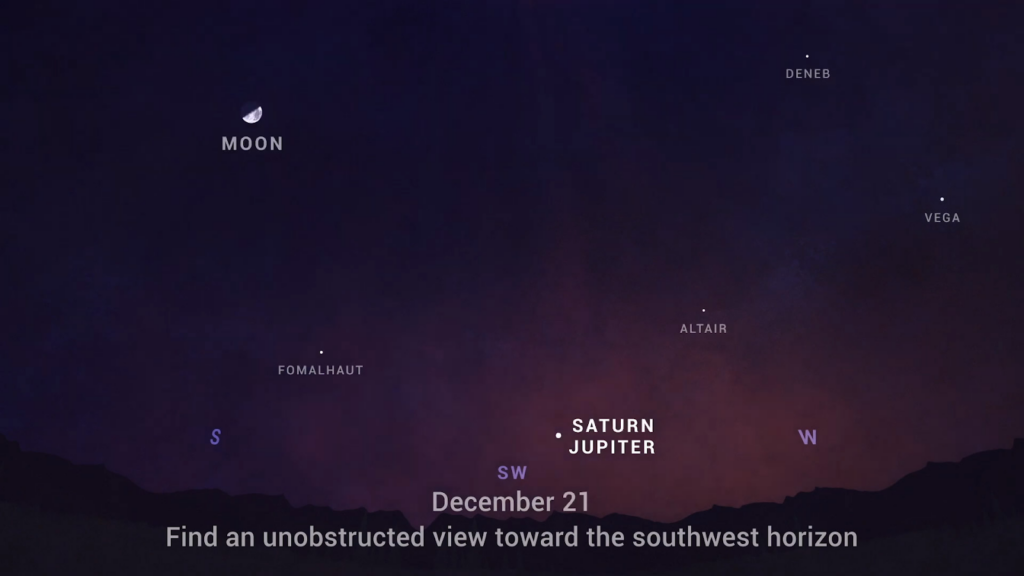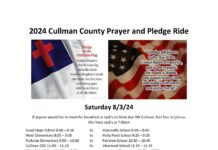

CULLMAN, Ala. – An astronomical phenomenon is getting a lot of attention due to its proximity to Christmas on the calendar this year. Jupiter and Saturn’s orbits bring them into what appears to be a close pass of each other- known as a “great conjunction”- every 20 years. Of course, the planets are not actually close; their orbits just happen to align with that of the earth in such a way that they appear close. While these events happen regularly, this one will be special. According to astronomy specialists Deborah Byrd and Bruce McClure with Earthsky.org, in the early evening of Dec. 21, 2020, Jupiter and Saturn will have their closest conjunction since 1623 and the closest observable conjunction since 1226.
According to a report from NASA’s Jet Propulsion Laboratory at the California Institute of Technology (Caltech), “Jupiter and Saturn have been traveling across the sky together all year, but this month, get ready for them to really put on a show. Over the first three weeks of December, watch each evening as the two planets get closer in the sky than they’ve appeared in two decades. Look for them low in the southwest in the hour after sunset. And on December 21st, the two giant planets will appear just a tenth of a degree apart – that’s about the thickness of a dime held at arm’s length! This means the two planets and their moons will be visible in the same field of view through binoculars or a small telescope. In fact, Saturn will appear as close to Jupiter as some of Jupiter’s moons.”
What will it look like?
Unfortunately, like nothing on a Christmas card. The two planets are each bright- Jupiter, when visible, is the brightest object in the sky- and when they come together, so they will light up their corner of the sky. They will not overlap, but some estimates say they might appear as a single elongated star. No one will know for sure until the 21st. But all the experts agree that, if you are an astronomy fan, it will be worth your while.
How to see it
Find a place, preferably elevated, where you can see as much sky just above the southwestern horizon as possible. At approximately 45 minutes after sundown, look to the southwest and the planets should be quite visible if the sky is clear.
Be ready to look quickly; the conjunction will not be high in the sky, and the planets will set early in the evening.
What if I miss it?
Don’t. The great conjunction happens from time to time, so you may have another opportunity . . . in another 20 years. Another conjunction this close? Check back in March 2080! This means that, for most of us, this month’s .1 degree great conjunction will be a once in a lifetime event.
The Bible
Some astronomers and historians believe that a similar event created what is known popularly in Christianity as the “Christmas Star,” the star Christians believe led the three wisemen, or magi, to Bethlehem after Jesus was born. According to the Bible’s Gospel of Matthew, “After Jesus was born in Bethlehem in Judea, during the time of King Herod, Magi from the east came to Jerusalem 2 and asked, “Where is the one who has been born king of the Jews? We saw his star when it rose and have come to worship him.”
Read the full Earthsky.org story at https://earthsky.org/astronomy-essentials/great-jupiter-saturn-conjunction-dec-21-2020.
Read about all of December’s astronomical events from NASA at https://solarsystem.nasa.gov/resources/2567/whats-up-december-2020-video.
Copyright 2020 Humble Roots, LLC. All Rights Reserved.



























